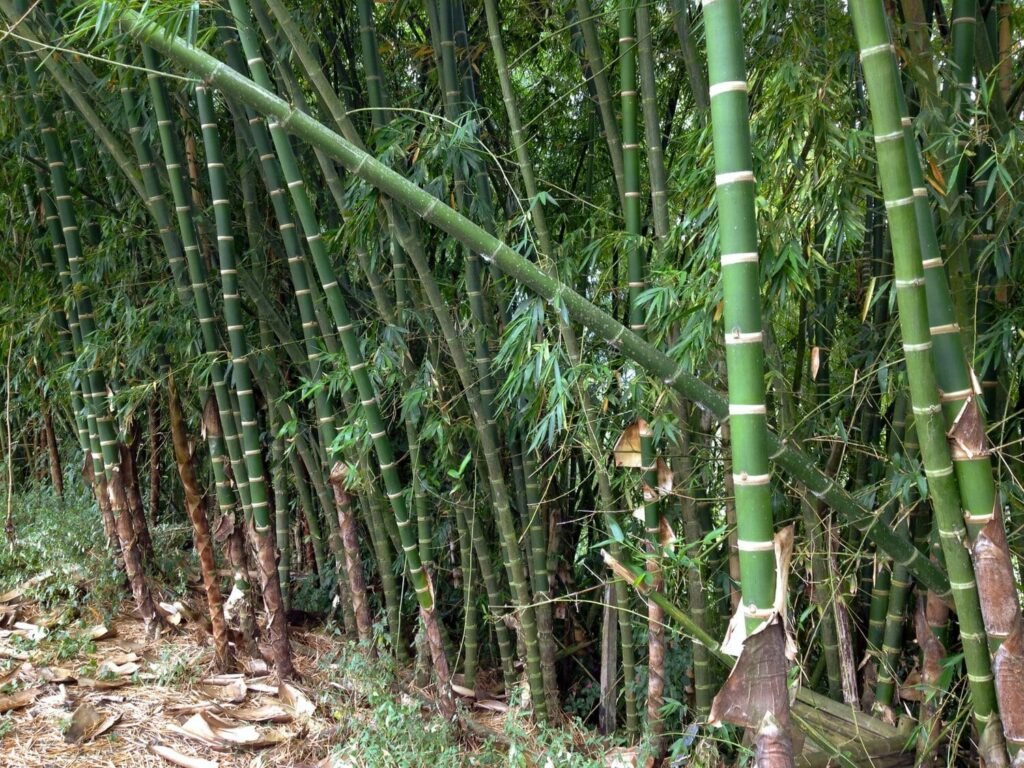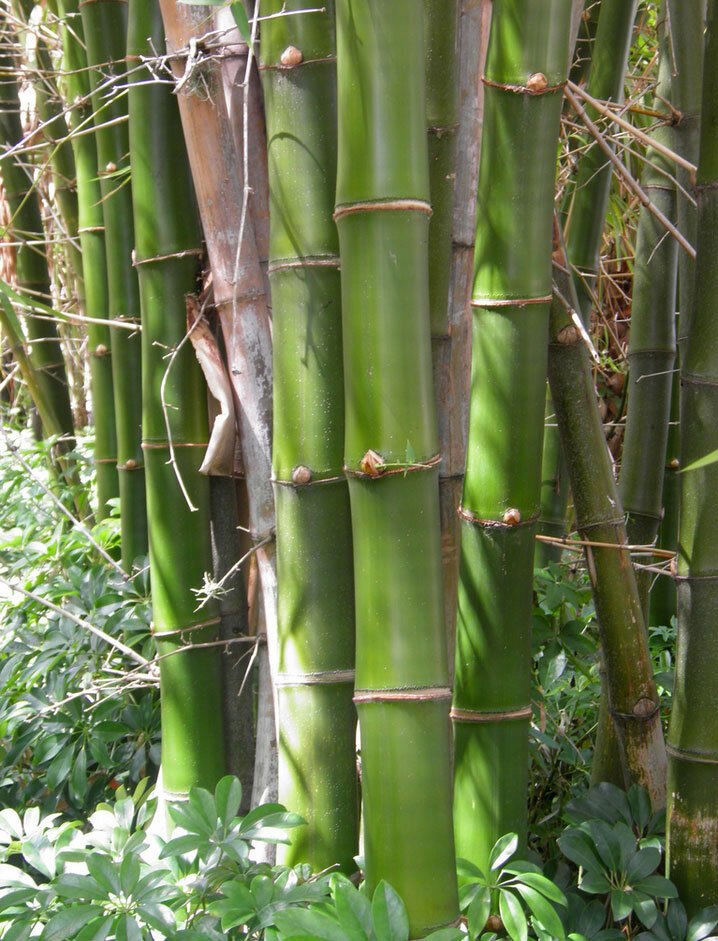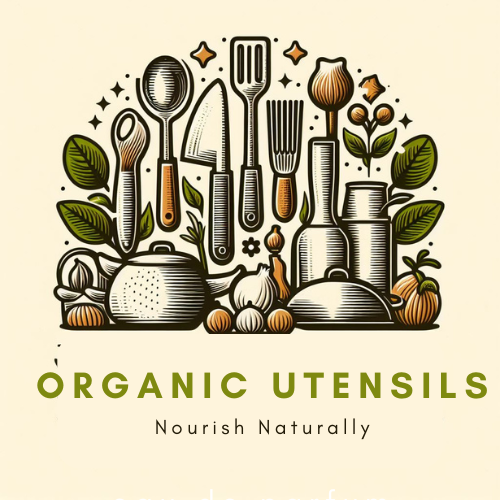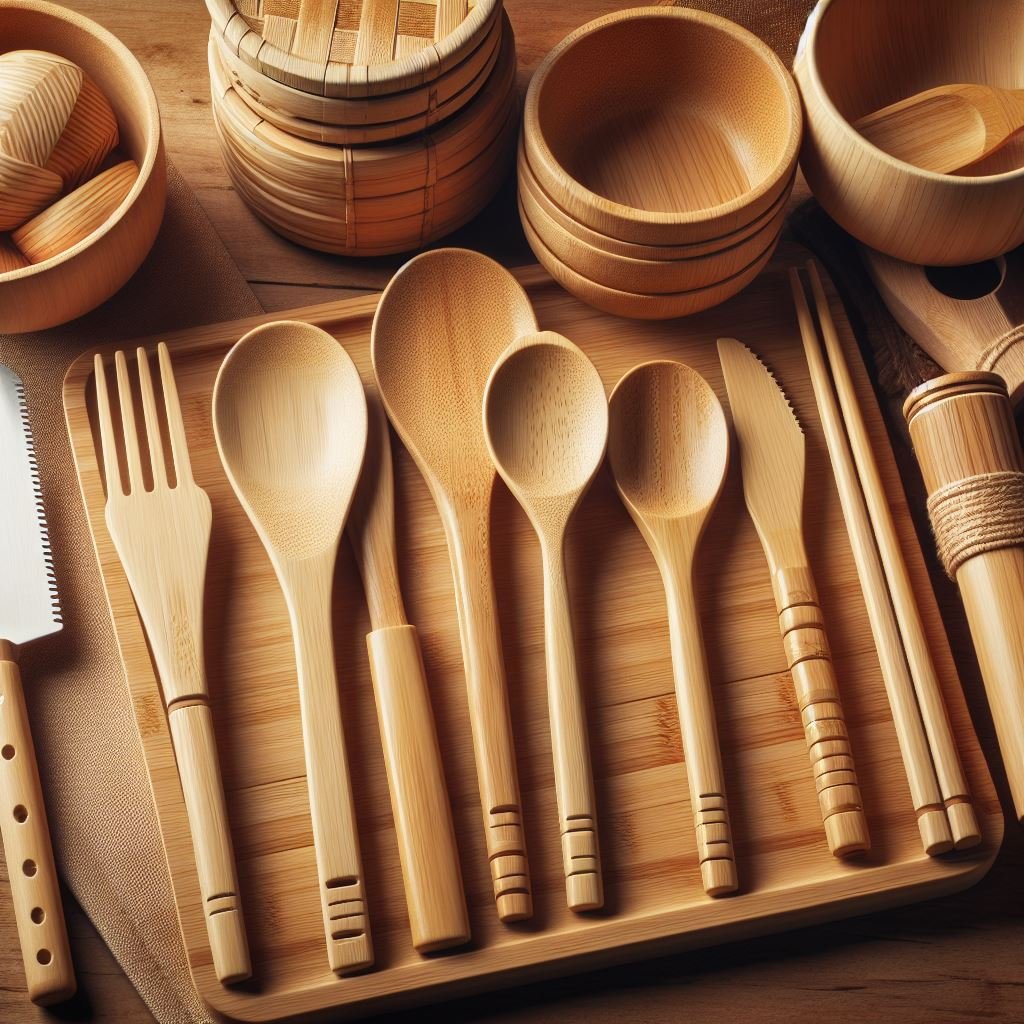Bamboo Cutlery
In the pursuit of sustainability, bamboo cutlery is emerging as a game-changer in the dining industry, offering a greener alternative to traditional utensils. This article highlights bamboo cutlery’s environmental, economic, and practical benefits, from its biodegradable nature and rapid growth to its safety and aesthetic appeal. As we explore how bamboo cutlery addresses global challenges like plastic pollution and resource depletion, we’ll see why it’s becoming a cornerstone of sustainable dining practices.
Bamboo is emerging in the dining industry for several compelling reasons, primarily driven by the global shift towards sustainability and eco-friendly practices. Here’s why bamboo stands out as a preferred choice:
1. Environmental Sustainability
Bamboo is highly sustainable due to its fast growing rate, ability to regenerate without replanting, and minimal need for pesticides or fertilizers. This makes it a renewable resource that can be harvested frequently without causing harm to the ecosystem.
2. Reduction of Plastic Waste
The dining industry is under increasing pressure to reduce its reliance on single-use plastics, which are major contributors to pollution and environmental degradation. Bamboo cutlery offers a biodegradable alternative that significantly reduces waste and helps protect marine life and ecosystems.
3. Health and Safety Benefits
Bamboo has natural antibacterial properties and is often produced without harmful chemicals, making it safer for consumers than plastic utensils, which can contain BPA and other harmful substances.
4. Economic Efficiency
Although the initial cost might be higher than traditional plastic utensils, bamboo cutlery can be more economical in the long run due to its durability and reusability. This reduces the need for frequent replacements and lowers long-term costs for businesses.
5. Aesthetic and Practical Appeal
Bamboo cutlery brings a unique, natural aesthetic to the dining experience that can enhance the overall presentation of meals. It’s also lightweight and durable, making it suitable for both everyday use and special occasions.
6. Global Trends Toward Eco-consciousness
Consumers are increasingly seeking sustainable products and practices, and businesses adopting bamboo cutlery can meet these demands while demonstrating their commitment to environmental stewardship.
7. Supporting Local Economies
The cultivation and production of bamboo can provide economic opportunities in regions where bamboo is abundant, supporting local communities and sustainable agriculture practices.
Combined, These factors make bamboo an attractive option for the dining industry, aligning with environmental goals and consumer preferences for sustainability and health.
Types of bamboo
Bamboo cutlery is made from various bamboo species, each offering unique characteristics that make them suitable for different types of utensils and uses. Here’s a closer look at some of the types of bamboo used in cutlery production and their specific applications:
1. Moso Bamboo (Phyllostachys edulis)

Usage: Moso bamboo is extensively used for a wide range of cutlery, including forks, knives, spoons, and chopsticks, due to its hardness and durability. It’s also used to create serving utensils and bamboo straws. The density of Moso bamboo makes it ideal for repeated use and cleaning, standing up well to the demands of daily dining.
2. Guadua Bamboo (Guadua angustifolia)

Usage: Guadua is recognized for its strength and resilience. It is often chosen for more robust items like serving spoons, salad tongs, and even cutting boards. Its structural integrity allows for the creation of larger items that require additional support and durability.
3. Tonkin Bamboo (Pseudosasa amabilis)

Usage: The flexibility of Tonkin bamboo makes it suitable for crafting items with slight curves or bends, such as ergonomic handles on cutlery or specialty utensils like sushi mats. It’s also popular for making thin, lightweight chopsticks.
4.Bamboo Vulgaris (Common Bamboo)

Usage: Due to its widespread availability, Bamboo Vulgaris is used in various cutlery and kitchen utensils. It’s a versatile species, suitable for everything from basic cutlery sets to decorative items that enhance the dining experience.
5. Black Bamboo (create image of Phyllostachys nigra)

Usage: Black Bamboo is primarily used for aesthetic purposes, adding a unique and sophisticated look to cutlery sets. It’s ideal for special occasions or as part of a premium cutlery collection. The distinctive color can complement a variety of table settings and themes.
choosing bamboo for cutlery
Selecting the right bamboo for cutlery involves considering various factors to ensure the final product meets both sustainability criteria and practical use. Here’s a guide to help you choose the appropriate bamboo species for making cutlery:
1. Consider the Durability and Hardness
- Look for species known for their strength and durability, such as Moso bamboo (Phyllostachys edulis). Bamboo’s hardness is crucial for creating cutlery that withstands regular use and washing without easily breaking or wearing down.
2. Assess the Growth Rate and Sustainability
- Opt for bamboo species that grow quickly and can be harvested sustainably. Fast-growing species like Moso bamboo and Guadua bamboo (Guadua angustifolia) are renewable resources that regenerate without the need for replanting, making them environmentally friendly options.
3. Evaluate the Aesthetic Qualities
- The appearance of the bamboo can affect the look and feel of the cutlery. For a unique or premium aesthetic, consider using Black Bamboo (Phyllostachys nigra) for its distinctive color. The choice of bamboo can complement the design ethos of the dining experience you wish to create.
4. Understand the Material’s Flexibility and Workability
- Some bamboo species offer more flexibility, which can be important for creating ergonomic handles or curved utensils. For example, Tonkin bamboo (Pseudosasa amabilis) is known for its flexibility and can be a good choice for specific design requirements.
5. Check for Natural Resistance to Pests and Fungi
- Bamboo with natural antibacterial and antifungal properties is preferable for cutlery, as it ensures the products are safe and hygienic for food use. Most bamboo species possess these properties inherently, but it’s always a good practice to confirm.
6. Availability and Ecological Impact
- Consider the availability of the bamboo species in your region or from your suppliers. Using locally sourced bamboo can reduce transportation emissions, contributing further to the sustainability of the products. Additionally, choose species that are cultivated in ways that do not harm local ecosystems.
7. Regulatory Compliance and Certification
- Ensure that the bamboo you select complies with international standards and regulations for sustainable and responsible forestry. Certifications from organizations such as the Forest Stewardship Council (FSC) can assure sustainable practices.
8. Cost-Effectiveness
- While sustainability and quality are paramount, cost is also an important consideration. Assess the cost implications of different bamboo species, keeping in mind that investing in a slightly more expensive, durable bamboo can be more cost-effective over time due to the longevity of the cutlery.
Below is a tabular list that outlines the type of bamboo, the types of utensils typically made from that bamboo, and the factors to consider when choosing that bamboo type for cutlery production:
| Type of Bamboo | Type of Utensil | Factors to Consider |
| Moso Bamboo (Phyllostachys edulis) | Forks, Knives, Spoons, Chopsticks, Straws | Durability, Hardness, Rapid Growth, Widely Available, Sustainability |
| Guadua Bamboo (Guadua angustifolia) | Serving Spoons, Salad Tongs, Cutting Boards | Structural Strength, Flexibility, Environmental Resistance, Rapid Growth |
| Tonkin Bamboo (Pseudosasa amabilis) | Chopsticks, Sushi Mats, Handles with Curves | Flexibility, Workability, Moderate Growth Rate, Aesthetic Appeal |
| Bamboo Vulgaris (Common Bamboo) | General Cutlery Sets, Serving Utensils | Versatility, Availability, Growth Rate, Cost-Effectiveness |
| Black Bamboo (Phyllostachys nigra) | Decorative Cutlery, Premium Sets | Unique Aesthetic, Durability, Limited Availability, Premium Pricing |
How to take care of bamboo utensils
Cleaning bamboo utensils properly is key to maintaining their durability and appearance. Here’s a straightforward guide to keeping your bamboo kitchenware in top condition:
1. Wash Promptly After Use
– Rinse bamboo utensils under warm running water to remove any remaining food particles. Avoid letting them sit with residue on them, which can attract pests or lead to mold.
2. Use Mild Soap
– Apply a small amount of gentle dish soap to a soft sponge or cloth. Harsh chemicals or abrasive scrubbers can damage the bamboo’s surface.
3. Hand Wash
– Gently clean the utensils with a soapy sponge or cloth. Bamboo should not be cleaned in the dishwasher, as the high heat and prolonged exposure to water can cause the bamboo to crack or warp.
4. Rinse with Warm Water
– After washing, rinse the utensils thoroughly with warm water to remove any soap residue.
5. Dry Immediately
– Use a clean, dry towel to wipe off any excess water from the utensils. Bamboo is best dried immediately after washing to prevent water absorption and potential warping or molding.
6. Air Dry Completely
– Even after towel drying, allow the utensils to air dry thoroughly upright to ensure all moisture evaporates. This step is crucial to prevent mold growth.
7. Occasional Deep Cleaning of Bamboo Utensils
For a deeper clean, especially if the bamboo utensils have absorbed colors or odors, you can use a solution of vinegar and water (1 part vinegar to 4 parts water) to soak them for a few minutes before following the usual washing steps. This natural solution can help disinfect and deodorize the utensils without using harsh chemicals.
Additional Tips
Do Not Soak: Never leave bamboo utensils soaking in water for a prolonged period, as this can cause them to swell, crack, or lose their shape.
Oil Periodically: To maintain the bamboo’s natural luster and prevent drying, periodically treat the utensils with a thin coat of food-grade mineral oil or bamboo conditioning oil. Rub the oil onto the surface with a cloth, let it sit for a few hours, then wipe off any excess.
Proper cleaning and maintenance will extend the life of your bamboo utensils, keeping them functional and beautiful for years to come.
Are bamboo utensils dishwasher-safe?
Bamboo utensils are generally not dishwasher safe. The high heat and prolonged exposure to water in a dishwasher can cause bamboo to warp, crack, or split over time.
Dishwashers can also strip the natural oils from the bamboo, leading to dryness and making the utensils more susceptible to damage.
To maintain the integrity and appearance of bamboo utensils, it’s best to wash them by hand with warm, soapy water, rinse them thoroughly, and dry them immediately with a towel.
Additionally, periodically applying food-safe oil can help preserve the bamboo’s natural moisture, preventing drying and cracking.
For those who prefer the convenience of a dishwasher, it’s advisable to look for utensils made from materials explicitly labeled as dishwasher safe. Bamboo, however, thrives with the gentle care of hand washing.
Conclusion
In conclusion, bamboo cutlery stands at the forefront of the sustainable dining movement, offering a practical and environmentally friendly alternative to traditional plastic utensils. Through the careful selection of bamboo species, such as Moso, Guadua, and Tonkin bamboo, manufacturers can create durable, aesthetic, and eco-conscious cutlery suitable for a variety of uses. For consumers and businesses alike, adopting bamboo cutlery not only contributes to reducing plastic pollution and supporting local economies but also enhances the dining experience with its natural elegance and safety benefits.
FAQ
1. Can Bamboo Cutlery Be Used More Than Once?
Yes, bamboo cutlery is durable and designed for multiple uses. With proper care, bamboo utensils can last for years, making them a sustainable alternative to single-use plastic cutlery.
How Can I Maintain and Care for Bamboo Cutlery?
To maintain bamboo cutlery, hand wash and dry it immediately after use, oil it periodically with food-safe oil to retain moisture, and store it in a dry place. Avoid soaking it in water or exposing it to extreme temperatures.
Can Bamboo Cutlery Be Repaired If It Gets Damaged?
Minor damages, like small cracks or rough spots, can often be repaired by sanding the area gently and applying food-safe oil. However, significant damage may not be repairable, and the utensil should be replaced.




